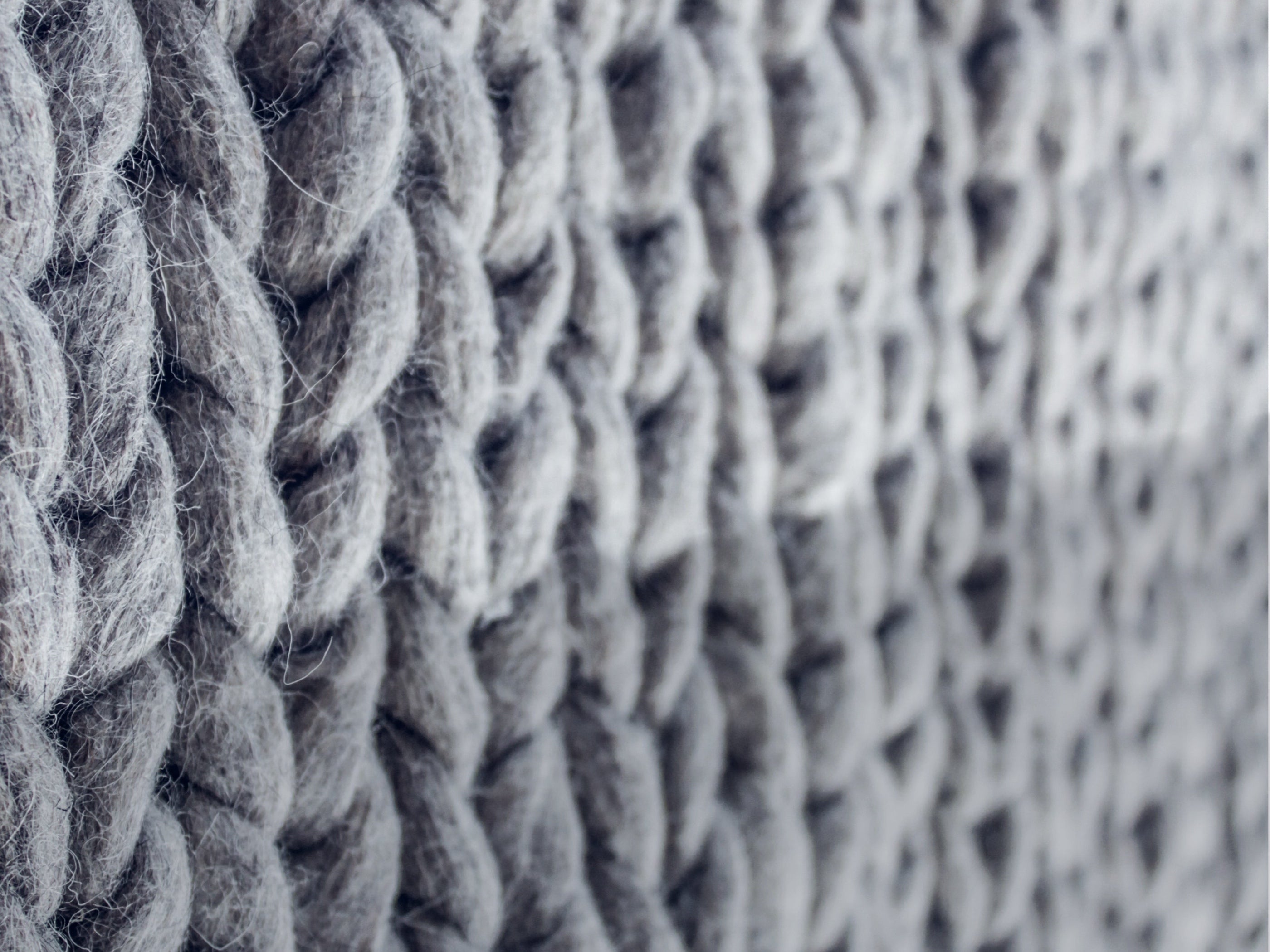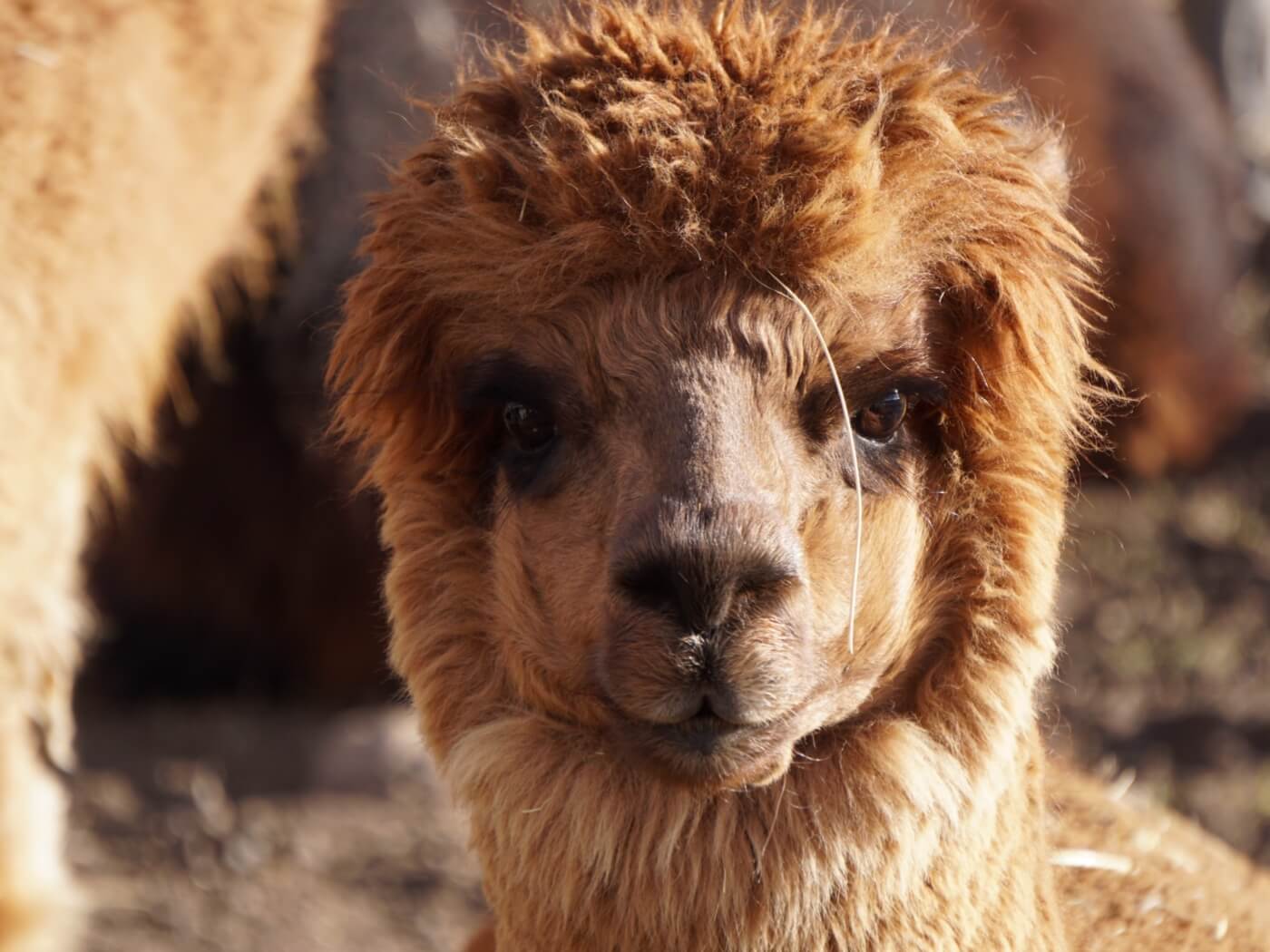By Claudia Ostrop
Anyone who knows a little about the Pascuali range knows that we place great value on high quality fibres. No synthetic fibres are used in our yarns. We only offer yarns made with natural fibres. Is that just a trendy zeitgeist quirk? In this article, we explain why we believe that yarns partly or entirely made of “plastic” should be avoided.
Different Types of Synthetic Fibres
Natural wool, pure synthetic fibre yarns or blends of both differ significantly in terms of price, appearance, softness and care. So, let's first take a look at what kinds of synthetic fibres there are. In order to do this, a distinction has to be made between two very different types.

Plant-Based Synthetic Fibres
Although these fibres are also produced artificially, they are based on natural or renewable raw materials. Plant components are liquefied in a chemical process and then sprayed through nozzles, creating the new fibre for the yarn. Bamboo viscose is one example of this type of fibre. It is used in our Forest and Cumbria yarns. Modal and Lyocell are comparable fibres that you have probably come across before.
Synthetic Fibres Made from a Completely Artificial Basis
These are the "classic" synthetic fibres, and their use (or rather, their non-use!) is the topic here. We all know polyester, polyacrylic, elastane and polyamide from textile labels and yarn labels. Even if they all have different properties, they have one thing in common: They are made from non-renewable raw materials, i.e. crude oil. Their ecological impact is, therefore, significantly worse compared to that of synthetic fibres made from renewable raw materials.
Polyacrylic
Polyacrylic is very often used in the textile industry because the fibre is soft to the touch and has warming properties. It is also light and easy to care for. Even if it warms like wool, it lacks one key property: It is not heat-regulating like natural wool, i.e. you sweat (and possibly smell ...) easily in it.
Polyester
Polyester is very strong and hard-wearing. Knitted items made from pure polyester, however, tend to feel uncomfortable on the skin because the fibre is not flexible and not very soft. Furthermore, because it is not a breathable fibre, you will have the same problem as with polyacrylic: you will sweat. Polyester is often blended with natural fibres to give the final yarn additional strength and stability or to create special effects such as glimmer or sparkles.
Polyamid
Polyamide (e.g. "Perlon" or "Nylon") is also very tear-resistant and is therefore often used as a blend for sock yarn in order to increase the durability of the socks. The thermoregulation property isn't particularly great here either.
Elastene
Elastene is a very elastic fibre, comparable to rubber. Elastane is therefore only used as a blend with other fibres. It is very often found in sock yarns.
 Natural Yarns or Synthetic fibres? Pros and Cons.
Natural Yarns or Synthetic fibres? Pros and Cons.
In the following section, every time we refer to synthetic fibres, we mean exclusively synthetic, artificially man-made fibres, as described in the previous section.
The price: synthetic fibre yarns are usually less expensive than natural yarns. A huge 500 g ball can sometimes be had at a discounter shop for around 10 €. Wool and other natural fibres have a significantly higher price.
Look and feel: There are synthetic fibre yarns that at first glance come very close to a natural yarn. They feel soft and cosy. With a little sheen, they can be reminiscent of silk. However, there are also the (mostly very cheap) yarns that come in bright and unnatural colours and feel hard and unruly.
Heat regulating properties: Natural wool, whether from sheep or another animal, not only warms well but also has good heat regulating properties. Synthetic yarns can also warm you nicely, but they are not breathable and do not have the temperature-regulating properties of wool. They trap moisture and bacteria in the spaces between the fibre more easily leading to an unpleasant odour. In contrast, natural wool is much more breathable so that both sweat and bacteria can evaporate easily from the fibre. It is, therefore, much more difficult to smell bad in clothing made with natural fibres.
Washing and care: Garments made with synthetic yarns are easy to care for. Simply put them in the washing machine and all is good. When it comes to washing, wool is a bit more demanding. That said, because the fibre properties make wool dirt and odour repellent, bacteria are practically unable to settle in it. Hence, it is usually sufficient to air out the knitted piece and shake it out.
When washing an item of clothing made with synthetic fibres, microplastic is produced with each wash cycle. The washing machine causes friction between the fibres shedding microplastics that are then easily released into our ecosystem via the wastewater.
Production: Fully synthetic artificial fibres are made from non-renewable raw materials such as crude oil. Production is complex and requires a large amount of chemicals. Despite strict regulations regarding limit values and the disposal of residues/wastewater, this is anything but unproblematic for the environment.
Degradability of synthetic fibres: At some point, the life of every knitted piece will come to an end. In principle, a sweater made of pure wool or other natural fibres could simply be left to rot on the compost heap. After a few months, there would be nothing left of it. The situation is completely different with its polyacrylic counterpart: plastics do not simply decompose into “nothing”. They disintegrate into smaller and smaller parts and remain in the environment for ever. These very small particles are known as microplastics. The alternative solution is to have the synthetic fibre sweater incinerated at the waste plant: not the most environmentally friendly solution either.
Knitting without Synthetic Fibres or Synthetic Blends
Apart from the usually lower price and possibly the fact that they can easily be washed in the washing machine, we do not believe that synthetic yarns or synthetic fibre blends offer any advantages at all. And let's be honest, when you have been knitting a sweater or cardigan for weeks, paying close attention to every single stitch, isn't it nicer to end up with a special item and not simply a cheap, easy-care piece? Handmade garments are usually more expensive than buying a finished piece. Make it worth your while!
Sock Yarns without Synthetic Fibres
It is still widely believed that sock yarns have to contain a certain amount of synthetic fibres in order to guarantee their durability. That doesn't mean that there is no other way around. After all, socks were also knitted in the days before polyamide and the like had been invented! Our yarn Pinta, for example, is a sock yarn made with merino, ramie and silk. Not long ago, we even put our vegan yarns to the test, setting out to prove that they are quite suitable to knit socks with.
If you knit socks with pure merino wool, they will of course not be as robust as socks made from classic sock wool. That is clear. But the result is quite positive when you knit with a yarn that has a blend of ramie, for example. It is generally important not to knit the socks too loosely: the closer together the stitches, the stronger the resulting fabric. In this way, there is no space for the yarn to move around and the stitiches to rub against each other as much which is what makes the yarn wear out. A sock that is too large and can slide back and forth in the shoe also leads to premature wearing out.
Our conclusion: synthetic fibres are justified, for example when it comes to sport and outdoor clothing. Very few people would want to do without them there. Underwear without elastane would be quite uncomfortable. And if you want to add a glitter effect to your knitting, you have no choice! That said, if the synthetic fibre in a yarn is of no practical use, couldn´t we simply do without it? The supposed advantages of synthetic fibres are usually outweighed by the positive natural properties of wool. So, the next time you buy wool, keep that in mind. Our environment is definitely worth it!




